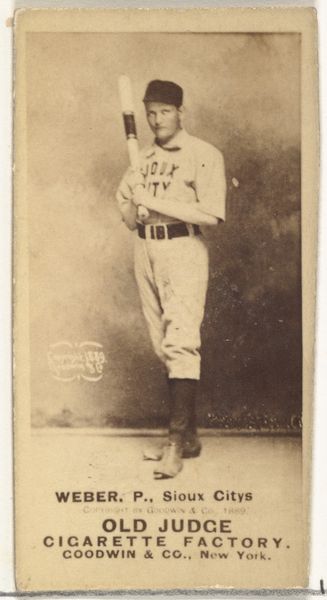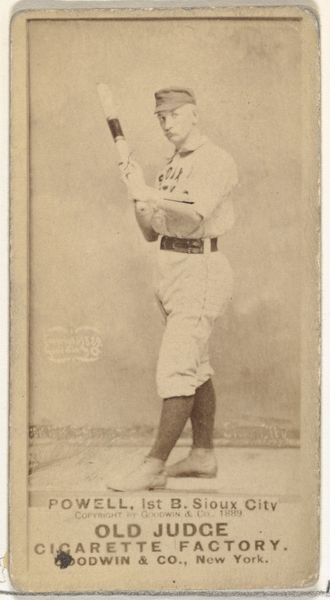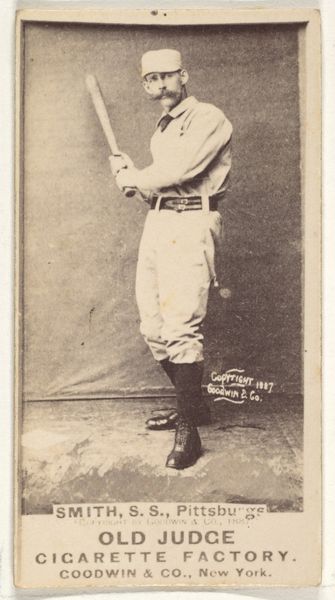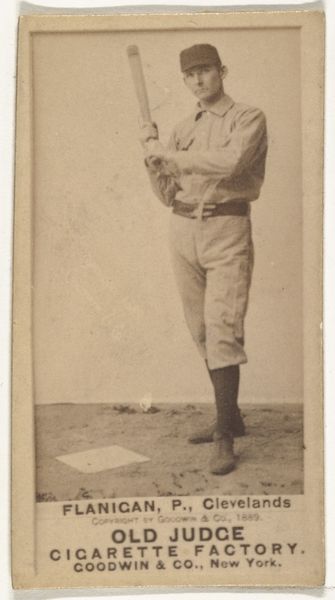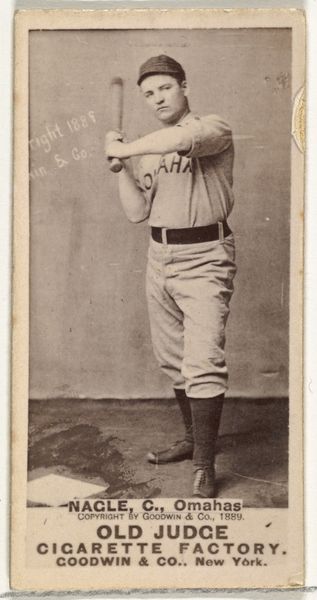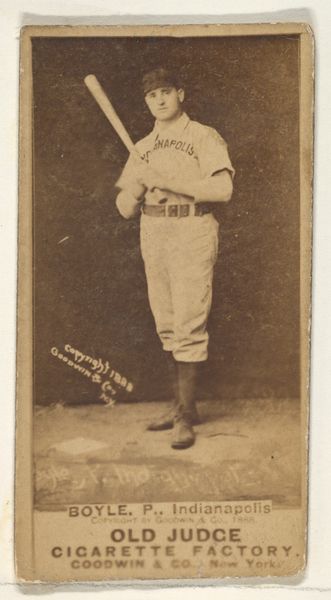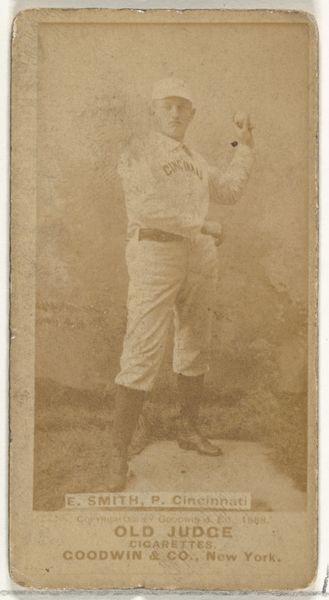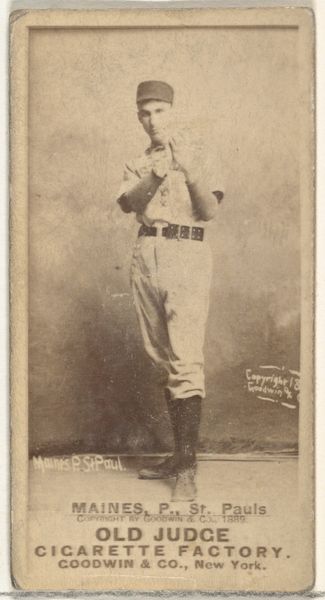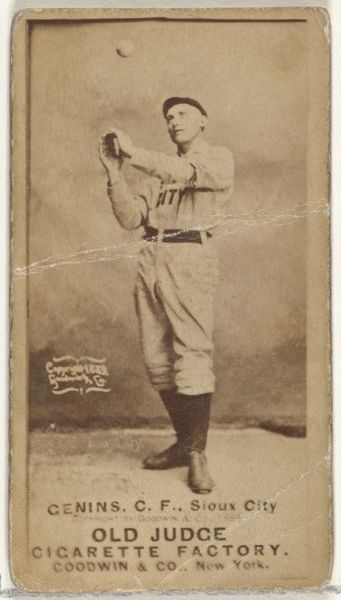
John J. "Jack" Clements, Catcher, Philadelphia, from the Old Judge series (N172) for Old Judge Cigarettes 1888
0:00
0:00
drawing, print, photography
#
portrait
#
drawing
# print
#
baseball
#
photography
#
19th century
#
men
#
athlete
#
realism
Dimensions: sheet: 2 11/16 x 1 3/8 in. (6.9 x 3.5 cm)
Copyright: Public Domain
Curator: Here we have a portrait of John J. "Jack" Clements, catcher for Philadelphia. It's from the Old Judge series (N172), printed in 1888 by Goodwin & Company as a promotional item for Old Judge Cigarettes. The piece is a photograph. Editor: The sepia tone lends a lovely feeling of nostalgia. I see how this intimate photographic style of commercial art builds an individual connection. It is very effective. The image seems oddly melancholy; he’s a ballplayer, but he's not smiling, exuding a more thoughtful, reserved disposition. Curator: Note how his gaze avoids direct contact; the use of off-center framing generates a psychological distance, which subtly directs the audience’s attention to his sport but does not exploit a game winning mood. It maintains some visual integrity. Editor: I see how the card normalizes male athleticism at a time when definitions of masculinity were being publicly renegotiated, but I want to recognize that the cigarette card is more than a piece of sporting memorabilia, that it’s about power. Smoking at this period was coded towards wealth and prosperity, to advertise cigarettes alongside sport reinforces capitalist, hegemonic control. Curator: I see how this interplay of athletic prowess with vice aligns to underscore the value of performance and market dominance in that era, although one can’t deny the importance of capturing this pivotal stage of athleticism during the baseball boom of the nineteenth-century America. Editor: Indeed. This portrait is deeply implicated within narratives of industrialization, mass consumption, and emergent forms of leisure. It prompts questions about who benefits from such representations. Clements’ image has become synonymous with a past, highlighting the evolving, turbulent history that has ultimately allowed him, through the support of commerce, to become permanently archived as an historical image. Curator: Analyzing the light in the portrait, the subtle contrasts in the sepia tones give us much to contemplate. It reflects photography's capacity to document individuals within time, while manipulating our emotional state through purely photographic techniques. Editor: Ultimately, the photographic piece raises essential inquiries regarding cultural ideals, the impact of marketing on representations of athleticism, and its complex socio-political history that is easily glanced over at first impressions.
Comments
No comments
Be the first to comment and join the conversation on the ultimate creative platform.

